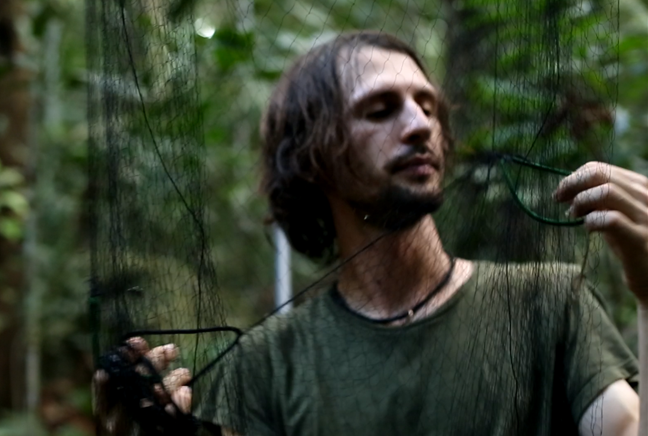In their latest research, Farneda and colleagues show how secondary forest regeneration affects the evolutionary dimension of bat diversity in the Biological Dynamics of Forest Fragments Project (BDFFP) landscape, Central Amazon, Brazil.
Land-use change across the tropics is pervasive, leading to widespread habitat loss and fragmentation. It is also a key driver of biodiversity loss. However, the agricultural abandonment in many tropical regions has led to the proliferation of secondary forest regeneration on previously deforested land.
Despite the importance of regenerating forests in mitigating the pervasive negative consequences of forest loss and fragmentation on forest-associated biodiversity, longitudinal studies on species’ phylogenetic responses to matrix regeneration are rare.

Bats comprise roughly one-fifth of all mammal species, and the Amazon is home to one of the richest bat faunas on the planet. They provide vital ecosystem services due to their high local abundance, richness, variation in morphology, foraging behaviour, and habitat use, making them a promising indicator group for studying responses to landscape modification in the Neotropics.
Our study was conducted in an experimentally fragmented landscape at the Biological Dynamics of Forest Fragments Project (BDFFP), Central Amazon, Brazil. Previous research in the area has shown that fifteen years after the creation of a series of fragments, lineages of bat species strongly associated with primary forest were heavily depleted. However, thirty years later, and with the regeneration of secondary regrowth in the matrix around the fragments, many of the species’ lineages that had previously been lost had made a comeback.

We used over 6,000 captures of 46 species of bats to investigate how secondary forest regeneration affects the evolutionary history of Amazonian bat assemblages. Using mist nets, we sampled bats in the interior and at the edges of continuous primary rainforest and experimentally isolated forest fragments, as well as in the surrounding secondary forest matrix of the BDFFP landscape.

We found that in this landscape, with relatively low fragment-matrix contrast, secondary forest maturation in the matrix facilitated the full recovery of phylogenetic diversity and noticeably reduced the local extinction probability of some bat lineages. The recovery of phylogenetic diversity exhibited underscores the large potential benefits of habitat restoration through natural forest regeneration to ameliorate some of the harm inflicted by humans on tropical wildlife.
The recovery was mostly due to the recolonization of previously deforested areas and forest fragments by lineages of old-growth specialist bats. This recolonization is likely attributable to increased diversity and abundance of food resources in areas now occupied by late-stage secondary forests, fulfilling the energetic requirements of a larger set of species.

The short-term nature of most fragmentation studies means that they typically only provide a brief snapshot in time, which impairs the capacity of researchers to properly capture the intricate complexity in wildlife responses due to the temporal dynamics associated with matrix regeneration in fragmented landscapes.
Incorporating a temporal perspective in the study of fragmentation impacts on biodiversity is, therefore, crucial to uncover the complex dynamics of biodiversity changes in human-modified tropical landscapes.
Read the full article, Bat phylogenetic responses to regenerating Amazonian forests, in Journal of Applied Ecology.

It sure was interesting when you said that many of the species’ lineages made a comeback after thirty years due to the regeneration of regrowth. This is something that I will share with my aunt since she would love her forest to be as diverse as possible and be a natural habitat for wildlife. I could imagine how a forestry management contractor could ensure that forest properties would be kept controlled for timber supplies and other various reasons.
LikeLike